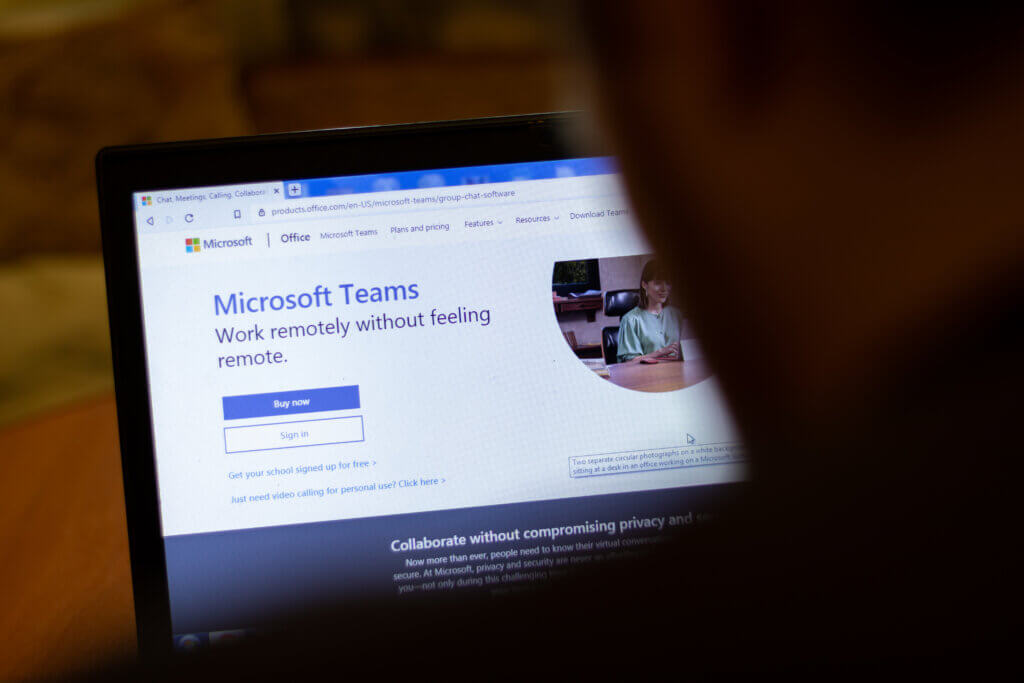Firefight No More: Shift Your IT from Re-Active to Pro-Active
Microsoft Teams Monitoring
IT teams often find themselves in a constant state of emergency: dealing with issues as they arise. So few issues are reported when they happen that IT teams are left with no choice but to be reactive. This reactive approach is not only a drain on resources, it also hampers system improvements and reduces user satisfaction.
With key platforms like Microsoft Teams, where less than 25% of users report issues when they occur, a purely reactive approach has the potential to disrupt communication and collaboration throughout your business – bringing it grinding to a halt. We also know that 91% of Fortune 100 companies use Microsoft Teams, but 85% of them are falling behind on the Teams Maturity model.
For companies that want to get ahead of their competition, it’s time to shift from a reactive to a proactive approach. Here’s how.
Reactive vs. Proactive IT: What are the Differences?
Reactive IT support is essentially firefighting. IT teams respond to problems after they happen, often scrambling to find quick fixes to minimize downtime. This approach can lead to a cycle of constant crisis management, where underlying issues remain unresolved and continue to cause issues.

On the other hand, proactive IT support involves anticipating and addressing potential problems before they impact the business. This strategy leverages advanced monitoring tools and effective frameworks and ways of working to identify system issues and implement preventive measures.
Transitioning from reactive to proactive is a big deal, particularly in an IT setting. Fixing issues before they snowball can be the difference between a simple ticket and massive business disruption.
Signs That Your IT Approach is Reactive
If your IT team spends most of its time on issues that are always ‘urgent’, they’re likely operating reactively. Common signs of a reactive IT approach include:
- Frequent unplanned outages and downtime
- A high number of unresolved tickets
- Low focus on strategic initiatives
- Low user satisfaction and frequent complaints
- Lack of visibility into system performance and potential issues
- Repeated instances of the same issues
If you want a quick way to find out why you’re having issues with Microsoft outages in particular, you can use this troubleshooting guide.
The Cost of Inefficient IT
Inefficient IT operations come with significant costs, both direct and indirect. Understanding these costs is crucial for justifying the shift to a proactive IT strategy.
Direct Costs (i.e., the bottom line)
Direct costs of inefficient IT include expenditures related to emergency repairs, overtime for IT staff, and lost revenue due to downtime. While lost revenue isn’t technically a cost, it’s something no business wants to deal with.
According to a report from Avasant, companies can spend as much as 11% of their revenue on IT services, with higher expenditures seen in sectors like financial services and healthcare. With that much investment, it’s no wonder that the costs leading from firefighting can be so high.
Indirect Costs (i.e., employee retention and satisfaction)
Beyond the immediate financial impact, inefficient IT can also have significant indirect costs. Frequent IT issues can frustrate employees, leading to decreased job satisfaction and higher turnover rates.
When employees constantly face technical problems, their productivity drops and morale suffers. This can, over a long period of time, also affect the company’s reputation, making it harder to attract and retain top talent – without even mentioning what these problems do to customer relations.
All of these issues are hard to measure but can be felt across a business and are something every business leader should avoid at all costs.
The Connection Between Proactive IT and IT Cost Reduction
Adopting a proactive IT strategy mitigates the issues associated with reactive IT and also leads to substantial cost savings. Two major areas where cost savings can be made are:
Technical Issues
Proactive IT involves regular system maintenance, updates, and monitoring to prevent technical issues before they occur. By identifying and addressing potential problems early, companies can avoid costly downtime and emergency repairs.
Tools like Martello’s Vantage DX provide a comprehensive overview of how Microsoft Teams/365 is performing, allowing IT teams to quickly pinpoint and resolve issues.
Inclusivity and Engagement
A proactive IT approach also fosters a more inclusive and engaging work environment. When IT systems run smoothly, people can focus on their work without technical disruptions. This leads to higher productivity, better collaboration, and improved job satisfaction.
Ensuring that remote and in-office employees have a seamless experience with tools like Microsoft Teams is crucial for maintaining engagement and inclusivity in hybrid work settings. That includes Teams Meeting Rooms and making sure that the meeting experience is the same for everyone, no matter where they’re based.
5 Best Practices For Adopting Proactive IT
Transitioning to a proactive IT strategy requires careful planning and the implementation of best practices. Here are five key steps to keep in mind:
1. Think Long-Term
Proactive IT requires a long-term mindset. This means investing in technologies and processes that may not yield immediate results but will pay off in the long run. Start by considering the future needs of your business when planning your IT strategy.
If you’re expanding, setting up new sites, bringing on new teams, working with more external partners – whatever it is – you need proactive IT infrastructure to support those changes.
2. Provide an Escalation Framework
An effective escalation framework ensures that issues are addressed promptly and efficiently. Define clear roles and responsibilities within your IT team, and establish protocols for escalating problems that require immediate attention.
This framework helps prevent small issues from becoming major disruptions. You can compare this sort of framework to how you resolve customer complaints, there needs to be a chain of seniority through which issues are resolved by the right person at the right time.
3. Invest in Monitoring Solutions
Investing in advanced monitoring solutions is essential for proactive IT. Tools like Martello’s Vantage DX provide a complete overview of how Microsoft Teams or 365 is performing. When there is an issue, the dashboard tells IT teams exactly what’s going on, using features like Network Path Analysis, meaning issues can be resolved before anyone is interrupted. In Vantage DX, IT teams can qualify and prioritize Microsoft Teams issues and MS365 outages locally or globally – so no matter where the problem is, they can take care of it.
4. Employ Ticket Organization Systems
Implementing a robust ticketing system helps prioritize tasks, track progress, and ensure that no issue falls through the cracks – streamlining issue tracking and resolution. This organizational approach improves efficiency and accountability within your IT team.
You likely already have a ticketing system, but many ticketing solutions are off the shelf and don’t always meet the needs of your organization – so explore bespoke solutions and evaluate whether additional investment is worthwhile.
5. Make it Easy to Submit Tickets
The biggest barrier to your IT team getting on top of issues is knowing about them. Monitoring solutions are a part of fixing that, but you still need to encourage users to report issues when they occur. Simplifying the process is the best place to start.
An easy-to-use ticket submission system (see above) encourages employees to report problems when they happen, giving IT teams the information they need to address issues before they escalate.
Conclusion
The companies with the most mature and effective IT practices have a proactive Teams monitoring approach in place – we’re seeing that across every industry.
By implementing long-term strategies, establishing clear protocols, investing in monitoring solutions like Vantage DX, and making ticket opening and resolving easier, a proactive approach is very possible. For those who take the time to invest in a proactive way of running their IT ops, there are a host of efficiency gains, cost reductions, and improved employee satisfaction improvements waiting.


